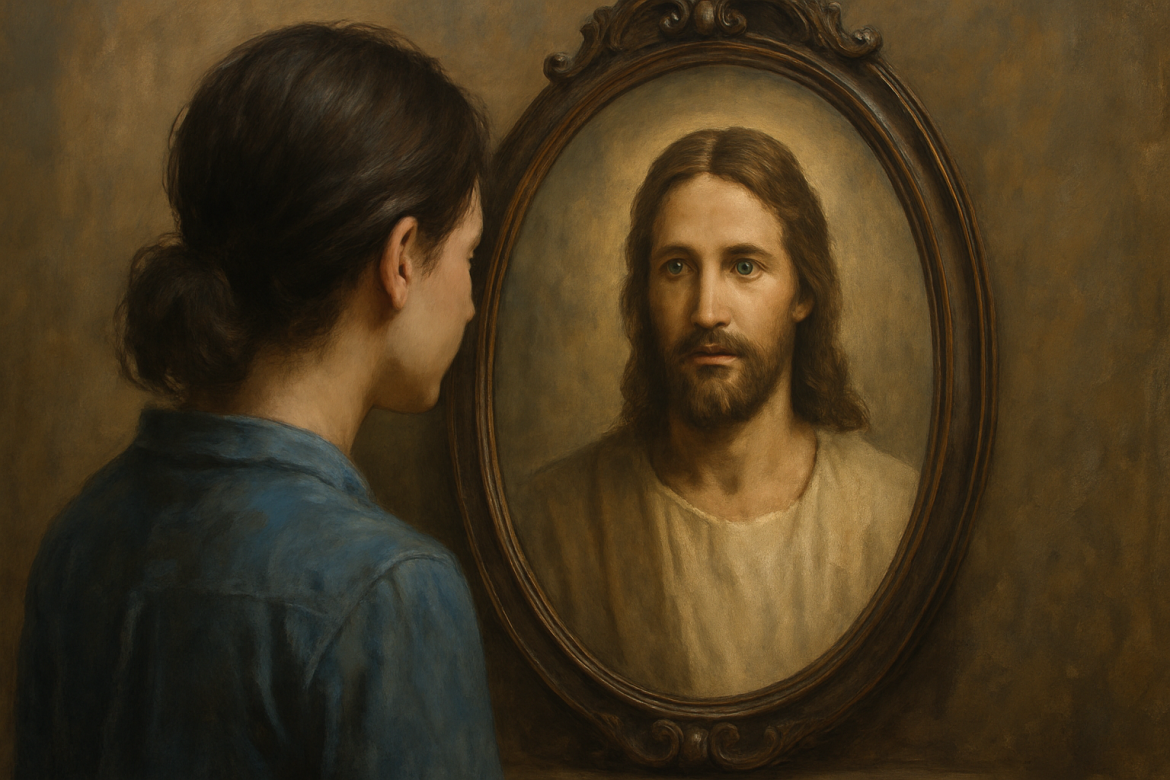Absolutely! Here’s your detailed 1000-word blog article based on the podcast episode and MIRRORS series theme:
In His Image: Reflecting God, Mirroring JesusRediscovering Identity, Purpose, and Wholeness in a Distorted WorldWhen was the last time you really looked in the mirror—not just to check your hair or straighten your shirt—but to seeyourself? Many of us are so used to distorted images of who we are—shaped by shame, pride, comparison, or distraction—that we forget who we were truly created to be.The Bible offers a radical and refreshing perspective: you were created to reflect God Himself. That’s not metaphor. It’s not wishful thinking. It’s the core of your design. And even though life has a way of smudging that mirror, Jesus came to restore the clarity.In this post, we’re going to walk through what it means to be made in the image of God, how Jesus is the perfect mirror, what distorts that reflection, and what small steps we can take to become who we were always meant to be.
Made in God’s Image: You Were Created to Reflect the DivineGenesis 1:27 tells us:
“So God created mankind in his own image, in the image of God he created them; male and female he created them.”
The original Hebrew phrase here is b’tzelem Elohim — “in the image of God.” In ancient times, rulers placed images of themselves across their territories to declare ownership and presence. So when Scripture says we are God’s image-bearers, it’s declaring something powerful: We are His representatives on Earth.Being made in God’s image means we carry His creativity, His compassion, His justice, and His relational nature. We are not the source of light—but we are mirrors designed to reflect it.Unfortunately, sin cracked the glass. It didn’t erase the image, but it did distort the clarity. Instead of confidence in our design, we see ourselves through a fog of insecurity, arrogance, fear, or comparison. The mirror is still there—but it’s smudged.Jesus: The Undistorted Mirror of God’s NatureThankfully, God didn’t leave us in the fog.Hebrews 1:3 says:
“The Son is the radiance of God’s glory and the exact representation of his being.”
Jesus didn’t just point the way to God—He embodied Him. If God the Father is the divine blueprint, Jesus is the model that walks, talks, and loves among us. He’s the perfect image-bearer, showing what humanity was intended to be.He showed us how to reflect God through humility, service, forgiveness, and sacrificial love. He lived what it means to bring light into darkness, to speak truth with compassion, and to bring order from chaos.The early Church Father Irenaeus once said that while we never lost the image of God, we did lose the likeness. Jesus came to restore that likeness—to clean the mirror. And the closer we walk with Him, the clearer our reflection becomes.What Warps the Mirror?Even with the best intentions, we often find ourselves struggling to reflect God clearly. So what’s going wrong?Here are a few culprits:PrideThe oldest sin in the book. Pride whispers, “I can be my own mirror.” It leads us to believe we know better than God or that we don’t need His guidance. When we elevate ourselves, we stop reflecting the Creator and start trying to replace Him.ShameShame is the opposite voice: “You’re too broken to reflect anything good.” It’s just as damaging. Instead of seeing ourselves as beloved image-bearers, we see a worthless or forgotten person—beyond repair. Shame clouds the mirror with despair.ComparisonWhether we feel inferior or superior, comparison distorts reality. We end up chasing someone else’s reflection rather than God’s. Like Leah and Rachel in Scripture, we often look sideways and miss what God is doing in us.DistractionIt’s not always dramatic sin that warps the mirror—sometimes it’s just noise. Scrolling endlessly, absorbing the chaos of the world, giving our attention to a hundred things other than God. It’s like turning the mirror away from the light. We stop shining because we’ve stopped facing Him.
Restoration Through Christ: Theosis and TransformationHere’s the hope: God doesn’t throw away broken mirrors.Through Jesus, we’re not just forgiven—we’re restored. Ephesians 4:24 says we are “created to be like God in true righteousness and holiness.” This restoration process is called theosis by many theologians—not becoming God, but becoming godly. It’s about participating in the divine nature, being reshaped by grace.This doesn’t happen overnight. It’s a slow polishing of the mirror.Every time you forgive, create something beautiful, bring order to chaos, or love when it’s hard—you’re reflecting God. You’re realigning the mirror. You’re participating in transformation.
Living as Mirrors: Small Steps Toward ClarityHere’s the beautiful truth: mirrors don’t make light—they reflect it. So our job is to stay close to the source.Here are some practical, everyday steps to start clearing up the mirror:
Pray this simple prayer:“God, show me one place today where I can reflect You.”Take one small action:Whether it’s encouraging someone, forgiving, creating beauty, or speaking truth with love—do it intentionally, as a reflection of Him.End the day with reflection:Ask yourself, “Did someone see Jesus in me today?” Not out of guilt, but as a practice of awareness.Limit distortion:Pay attention to what fogs your mirror. Are you falling into comparison? Pride? Shame? Distraction? Gently realign your gaze.Journal your reflections:Keep track of the moments when God’s image breaks through—in you or in others. These glimpses can become anchors for your identity.

